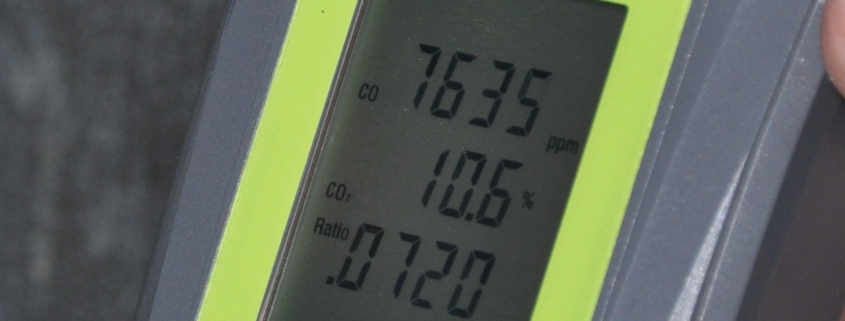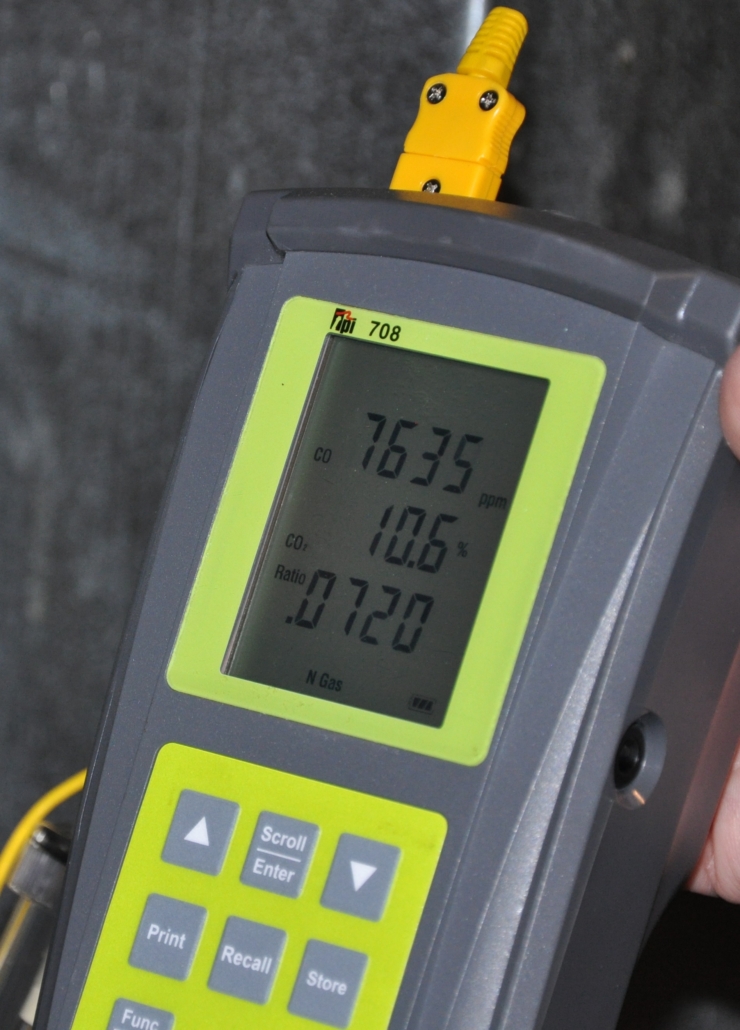
How can you tell if you have carbon monoxide poisoning?
You can’t without some external confirmation. Carbon monoxide poisoning is largely indistinguishable from other diseases like the flu, so unless you have been warned that there is carbon monoxide in the air, you may not figure it out until too late. The natural tendency with the common symptoms of headache, fatigue, nausea, vomiting is to try to go to sleep to feel better. Doing that if it is carbon monoxide that is causing these symptoms can be deadly. It is all really quite scary, which is why carbon monoxide alarms are so important.
Click here for the symptoms of carbon monoxide poisoning are described in detail here.
Carbon monoxide is abbreviated with its chemical symbol, CO, for one oxygen atom and one carbon atom. Non-fatal CO exposures typically start with headache, brain fog, nausea and or vomiting. Fainting or syncope are likely when the blood concentration of CO gets above 30%. Blood concentrations of CO are technically referred to as carboxyhemoglobin levels, and abbreviated COHb. Levels are usually called abnormal in the hospital if they are at 3% or higher.

How can you tell if you have carbon monoxide poisoning? You can’t without a measurement of carbon monoxide in the air or in the blood.
At What COHb Level Does Poisoning Occur?
A concentration above 10% at the time of the poisoning is significant, but any level above normal when measured in the hospital, can indicate a more significant poisoning. The body metabolizes COHb over time, based upon body size, respiration and how much oxygen a patient receives. In most cases with evacuation by ambulance, the patient is put on oxygen as soon as the EMT’s perceive that there was CO poisoning. If the blood is tested an hour after evacuation, the peak level at the time of evacuation is likely at least double what the level is measured in the blood.
How can you tell if you have carbon monoxide poisoning? If you are symptomatic and been exposed.
If you have any of these symptoms from a carbon monoxide exposure, you were poisoned, not just exposed to CO. The definition of when a person goes from CO exposure to CO poisoning is when they become symptomatic.
40% of those who are poisoned to the level of 10% COHb (at evacuation, not measured later) have are likely to suffer long term effects from the CO poisoning. See Chambers, et. al. The most significant long term effect of CO poisoning is permanent brain damage. Any organ in the human body can be damaged by carbon monoxide. As high as 15% of the survivors of CO poisoning have cardiac problems.
How Can I Tell if I have Been Exposed to Carbon Monoxide Repeatedly?
It is even harder to clearly identify that carbon monoxide is the cause of illness when it is caused by repeated exposures. As we have stated elsewhere, if multiple people in the environment are feeling ill contemporaneously with each other, that is a big clue. If people feel better when they leave that environment and then worse when they return that is a big clue.
Carbon monoxide poisoning is not just about the one time, high exposure events, but also includes people who suffered poisoning, with the risk of brain damage, in repeated events, day after day, even if the levels of the exposure were never life threatening. Those who suffer repeated exposures may be even more likely to suffer long term effects, such as DNS, than those who have a one time, peak exposure. The reasons for this are analogous to the reasons that athletes are at serious risk of permanent residuals when they have repeated concussions, but are perhaps worse because of the overlapping of periods of acute symptoms with the delayed and inflammatory effects of poisonings in previous days or weeks.
